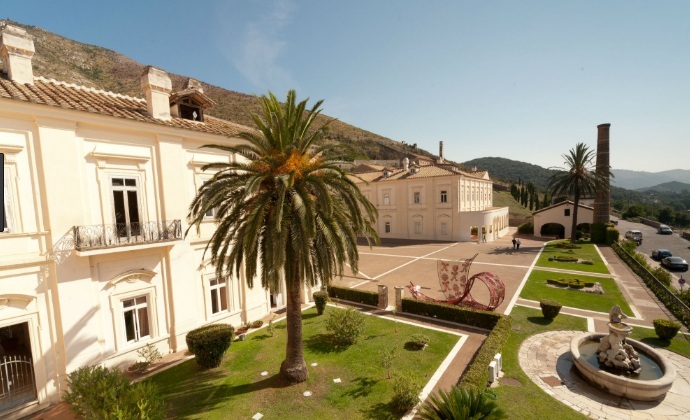The Belvedere of San Leucio, Silk City
GRAND TOUR BLOG | 17 April 2020

The Belvedere of San Leucio, Silk City

What great insight avettero kings Bornone. C’ 'Excuse to d’ 'Chasing a truvajene’ Paraviso water, any air and cornflower.
(prof. Luigi Bologna)
The fascinating history of Belvedere di San Leucio, hamlet of Caserta, It is closely linked to that of the dynasty Bourbon that in this place realized something very unique, not so much from the architectural point of view, As from that work and social.
Belvedere di San Leucio, history
It all began in 1750, When Charles III of Bourbon, King of Naples from the 1734, She bought by the powerful family of Caetani (in some documents also Gaetani) the Caserta State, possession of the dukes of Sermoneta had previously acquired by marriage by Acquaviva (Anna Acquaviva, last heir of the family, She had been married in 1618 the Duke Francesco Caetani) and that they were forced to sell because of the huge debts.
Among the possessions acquired by Caetani there was also a palace, combined summer residence and widely described in Heritage of Relief Anna's princess 1635, that Acquaviva They had built on hill of San Leucio, in a very prime location, since the building, reiterating a different model Suburbane city present on the hills of Lazio and Tuscany, He dominated the vast plain of Caserta and for this reason it was immediately renamed Belvedere di San Leucio.
A Charles III of Bourbon the city of Caserta He liked it immediately, to the point that, more than once, He decided to transfer the new capital of the kingdom, feeling Naples, for different reasons, inadequate. The project never went into the port but Caserta It was in the late eighteenth century and the middle of the next, the privileged place of Bourbon, not only for the construction of the sumptuous and imposing royal palace, but also for resetting hill of San Leucio he was born in Palace of Acquaviva, that the king wanted to expand to make it a Hunting Lodge, for the presence of large and dense forests and various animal species, especially wild boars.
At the Belvedere of San Leucio of Caserta, IL6 last April the photographic exhibition was inaugurated "Our Silk Road"Curata da Zeng Yi , photographer and curator of world fame that has received the highest award of honor and success from China's State Council, and the Italian art critic Massimo Sgroi.
The Silk Road

The idea was born during the view of Zeng YI at Belvedere, Unesco site. Back at China, the district of the ancient city of Zibo City and the City of Caserta begin to develop a memorandum of understanding that will bring the two historic sites to be twinned.
In the Belvedere of San Leucio it is indeed a historical map that starts from Shandong (Region where Zibo city) and it arrives at the Belvedere as an ideal terminal of the Silk Road. In the visit that a delegation casertana did last October signed a memorandum that connects the two cities.
In thus shows 171 photo created by the greatest photographers in the world and ideally run through the life of the countries located along the route of the Silk Road. There will be works of Chinese photographers, kirghisi, Mongolia, ulbeki, much, Korean, until you get to the Europeans, including Italian.
The event is part of the project "One belt one road" and focuses on the relationship between people, knowledge and cultural exchange, with the support of the Government and the Ministry of Culture and Tourism of the People's Republic of China, to contribute to the growth of the territory. All 10 before the exhibition there will be a "History conference, opportunities of integration and development of cultural tourism between China and Italy. Our Silk Road will take the stage later in London.



